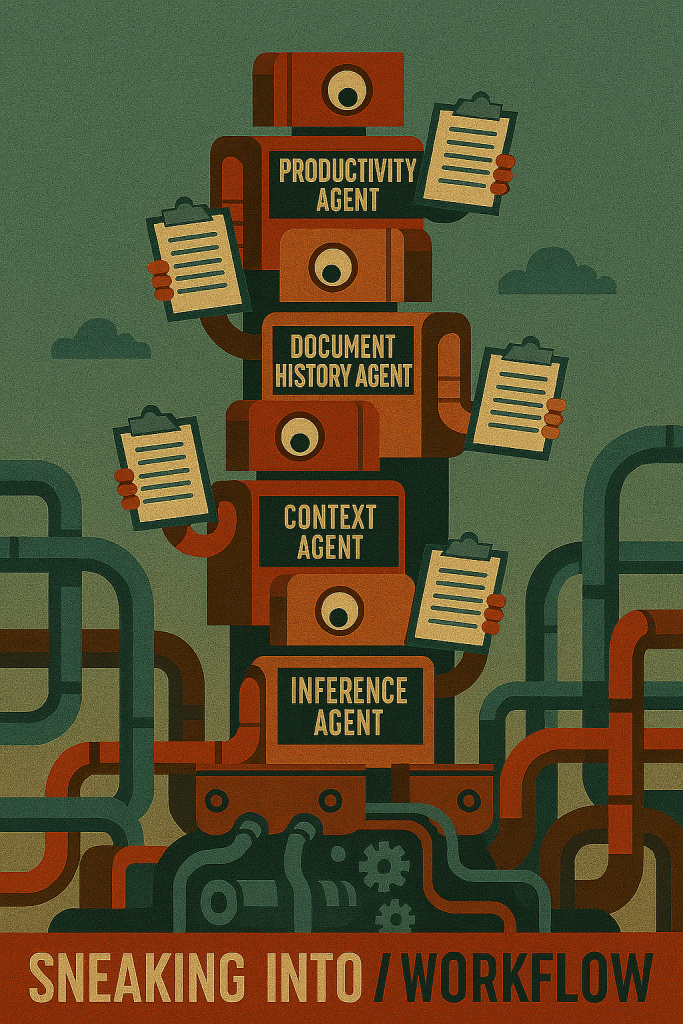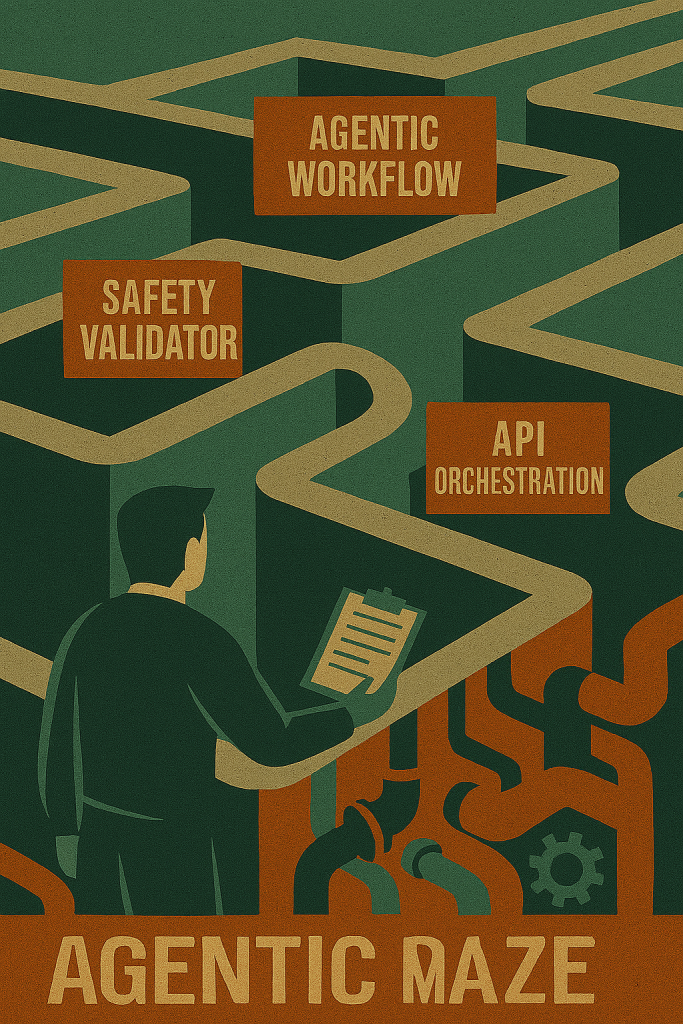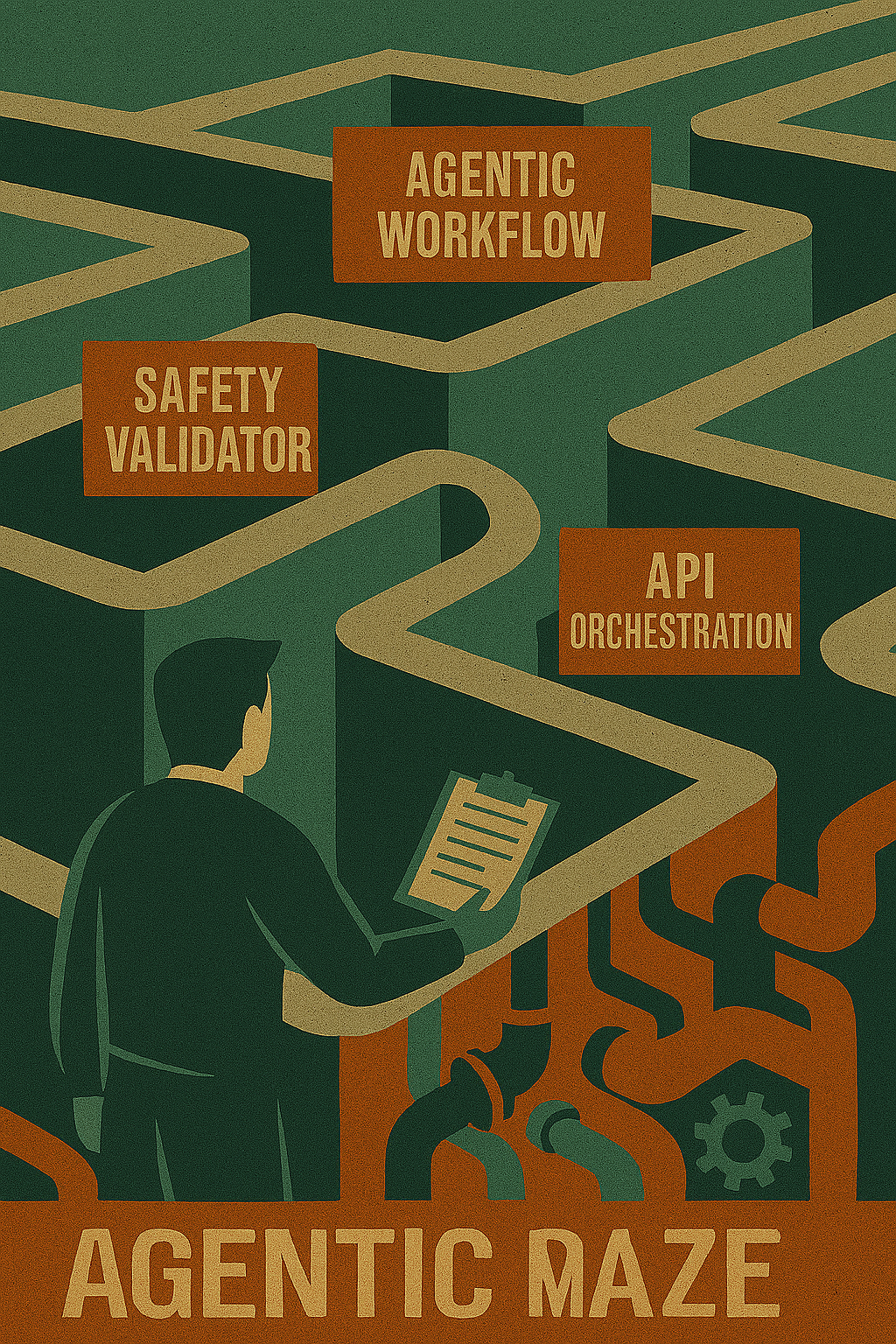The Complexity Con: We’re not just asking a question—we’re exposing the architecture of artificial complexity. Most of what’s being rebranded as “AI breakthroughs” are just old tricks dressed in neural lace. It’s not that the task is harder. It’s that the stack is bloated—on purpose.

🧭 “It’s just a click,” they said. “AI will handle it.”
In the age of Gemini 2.5, we’re told that AI agents can now click, scroll, and type—just like humans. They can fill out forms, drag sticky notes, and schedule spa appointments. It’s the next frontier, they say. A revolution in productivity.
But here’s the truth: we’ve been able to do this for decades. With macros. With browser extensions. With simple scripts.
So why now, suddenly, do we need:
- Screenshot loops
- Action history
- Function call validators
- Safety guardrails
- Multi-agent orchestration
- MCP & API’s
- Cloud-based inference
To do what AutoHotkey could do in 2008, or what a browser extension could do in 2012?
🧩 Artificial Complexity = Artificial Economy
Gemini 2.5’s Computer Use model is a masterclass in economic inflation disguised as innovation. It doesn’t just automate—it bloats. Every click becomes a function call. Every scroll becomes a loop. Every form fill becomes a multi-step inference chain.
And every step?
- Requires cloud compute
- Invokes API credits
- Demands enterprise tiers
- Introduces latency
- Justifies billing
This isn’t about empowering users. It’s about creating dependency, inflating cost, and monetizing control.

🧨 The Rebranding of the Obvious
Let’s be clear:
- Auto-responders? We had them in Outlook 2003.
- Dictation? Dragon did it in the ’90s.
- UI automation? Selenium, Playwright, and even basic JavaScript handled it.
But now, we’re told these tasks require “agentic workflows,” “looped inference,” and “contextual safety validators.” Why? Because simple tech doesn’t scale profitably.
🧬 The Real Cost of “Progress”
Gemini 2.5’s Computer Use model isn’t just a tech demo. It’s a blueprint for the next wave of artificial complexity:
- Make simple tasks look hard.
- Build bloated stacks to solve them.
- Charge users for the privilege.
And all the while, the real innovation—local processing, transparent logic, creator-first control—gets buried under dashboards, credits, and enterprise tiers.

🧠 Final Nut: The Clickbait Stack
We’re not watching AI evolve. We’re watching economic architecture metastasize.
The goal isn’t to make tech smarter. It’s to make users dependent, confused, and billable. We’re watching corporations rewire the definition of “progress”— Turning simple tasks into subscription funnels, Turning convenience into control.
But here’s the truth they won’t advertise: Consumers are the system. We decide what scales. We decide what survives.
- Ask why a feature that worked offline now demands cloud access.
- Ask why “free” tools come with billing dashboards.
- Ask why you need a half dozen connected services
- Ask why “smart” means “surveilled.”
- Choose tools that respect your autonomy.
- Support platforms that offer transparency.
- Share knowledge, not just content.
- Opt out when the tradeoff isn’t worth it.
Because every click, every subscription, every “yes” to a new feature— Is a vote. And the only way to dismantle artificial complexity Is to stop feeding it.
Any questions or concerns comment below or Contact Us here.
- Genesis Mission; funding architecture, and the open-ended cash funnel
- The AI Misalignment Misunderstanding: Who’s Really at Fault?
- The Coming AI Power Clash: Federal Control vs. State Sovereignty
- The BYDFi MoonX Migration Trap: A Custodial Rug in Disguise
- 🎭 Masterclass Mirage: How “Education” Became a Sales Strategy



Leave a Reply